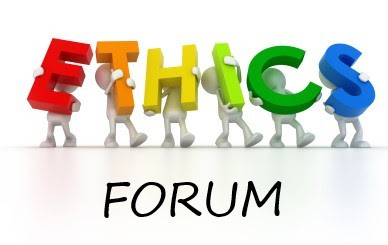Dr. Alice C. Linsley
Before the first civilizations appeared in the Nile Valley, Mesopotamia, and the Indus Valley, human populations were drawn to ancient water systems. Rivers and lakes came under the control of local chiefs. The water systems were a source of wealth for these early lords, and places where religious rites were performed. Water came to be regarded as a substance of life, healing, fertility, and cleansing.
As technology advanced, local rulers relied on the skills of boatbuilders, masons, smiths, and scribes to build and expand their territories. The early Hebrew ruler-priests were in the service of the early kingdom builders such as Nimrod, a Kushite kingdom builder (Gen. 10).
Nimrod left the Nile Valley and through marriage to the daughter of a Sumerian king named Asshur he became established in the region of Mesopotamia.
Nimrod’s Sumerian wife may have served as a singer or dancer at the water temple of Uruk/Erech which was initially constructed around 5500 B.C. The later “
Stone-Cone Temple” was built over it. Among Nimrod's descendants were other kingdom builders such as Arpachshad, Asshur, Nahor the Elder, and Abraham’s father Terah.
The advances of the early civilizations were under the powerful leadership and authority of "the mighty men of old" (Gen. 6). These "
first lords of the earth" were governed by
sacred law codes as early as 3200 B.C. They established commerce, built temples, patronized masons, metal workers, priest-physicians, and astronomers. Royal scribes were conversant in multiple languages and able to write using the various scripts of the Fertile Crescent and the Ancient Near East.
The royal water shrines were tended by priests who used the water to tend their flocks and herds. The water shrines were under the control of regional lords, but visitors were welcome to the water. Wells and water shrines were neutral ground and natural gathering places. Biblical narratives speak of Hebrew men meeting their future wives at wells, water shrines, or oases.
Royal Women and Water Shrines
Royal mothers ensured that their sons received the best foods available, the best medical attention, and training in kingship so that they would be prepared to rule and maintain power. The queen mother’s role was never separate from the identity of the royal house and its political strategy. She played an important role in securing proper marriage partners for her sons. These marriages formed political alliances. Hebrew mothers were instrumental is preserving the caste’s unique identity by arranging caste endogamous marriages for their sons and daughters. They were consummate matchmakers.
Royal mothers exerted authority in their own rite. They engaged in rituals at royal temples and shrines and attended royal banquets. These queen mothers held royal titles such as
eresh (queen),
šarratum (queen),
gore/kore (a female head of state),
gibrah (from the Hebrew
gibor, meaning powerful), and
ra-bitu.The wives and daughter of these early Hebrew ruler-priests served at the royal water shrines. One title for royal ladies who served at Bronze Age water shrines was rabitu. The term is likely related to an Ancient Egypt word bity and to the earlier Akkadian words for water (
raatu) and house/shrine (
biitu). The emblem of the rabitu was the spindle. In the Ugaritic story of Elimelek, the queen mother holds the title rabitu and her emblem is the spindle.
Many women had names associated with Neith as she was the patroness of water shrines, rivers, pregnant women, and women in childbirth. It is likely that Neith was a holy woman who lived at one of the early water shrines along the Nile before Egypt emerged as a political entity (c.3000 B.C.). Joseph's wife Aseneth was named after her. She was the daughter of a priest at Heliopolis, a prestigious shrine city on the Nile River.
Earlier in history, a queen named Merneith (Beloved of Neith) gave birth to a son known as Hor-Den.
Hor-Den was his Horus name and testifies that he was a devotee of God Father (Ra) and God's son (Horus/HR). This was when the Upper and Lower Nile regions were first united (c. 3000 B.C.), and Den was the first ruler depicted as wearing the double crown as the sovereign over the Upper and Lower Nile regions.
Hebrew wives and daughters who were associated with water shrines include Abraham's wife Keturah at the Well of Sheba (Beersheba), Sarah at Hebron which had four water sources, Asenath at Heliopolis (biblical On), and Moses' wife Zipporah who he met at the well of her priest father in Midian. Likewise, Jacob met Rebekah at the well of her father. Judah had sexual relations with Tamar at
Enaim, the cult site of Two Springs (Gen. 38:14).
These women grew up at rivers, wells, and oases over which their fathers ruled. Though these were women of high social standing within their communities, they did not live pampered lives. Rebekah and Zipporah drew water for the livestock, a physically demanding task.
Because water is universally perceived as necessary for life, women seeking to conceive and deliver healthy children visited water shrines where they prayed and made offerings. Water shrines could be at rivers, lakes, wells, or oases. They might even be a ritual bathhouse such as the mikveh. The mikveh is associated with natural water systems. By law, it must be composed of stationary waters and must contain a percentage of water from a natural source such as a lake, river, sea, or rain.




